#seti I
Text
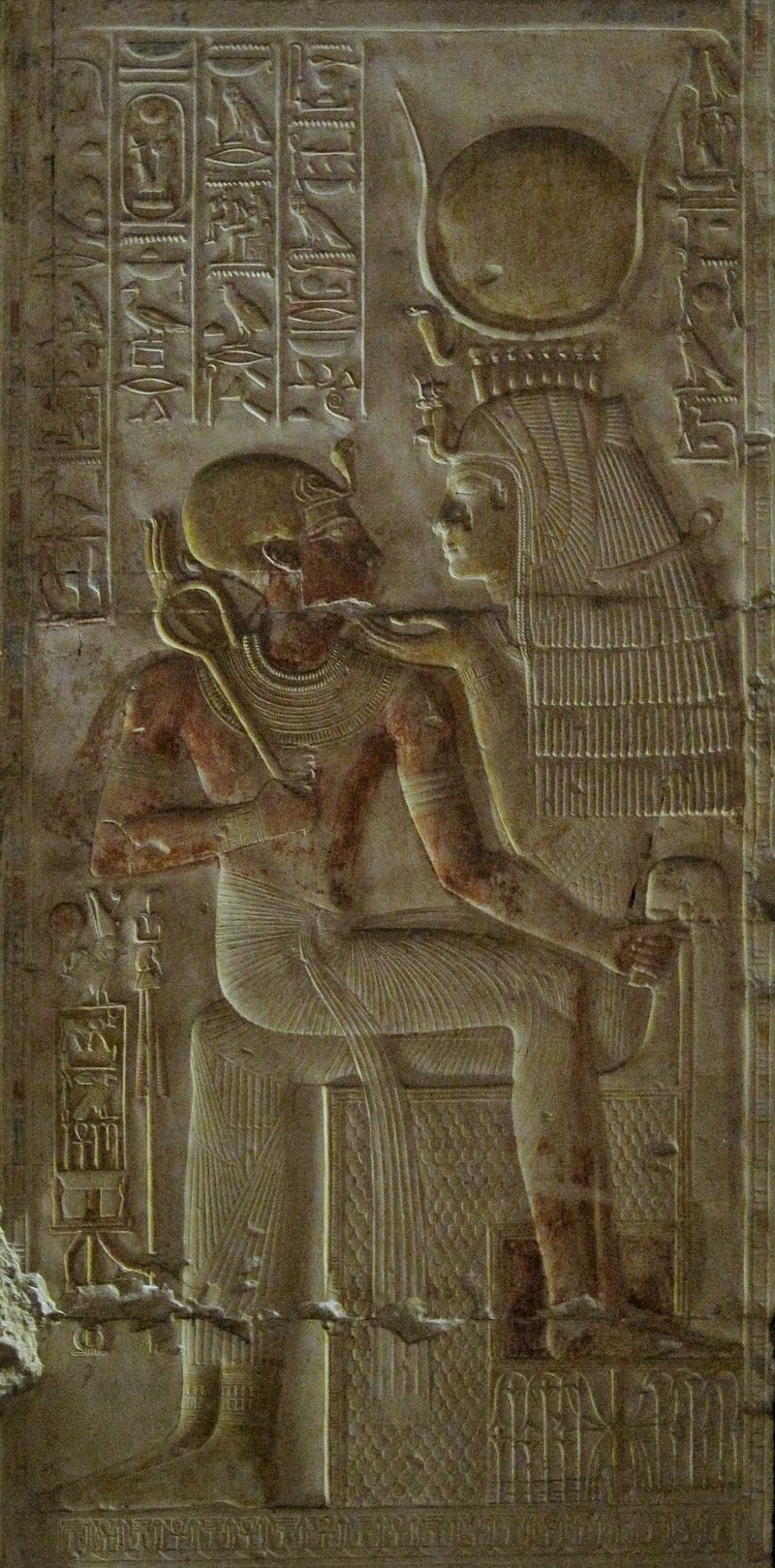
Goddess Isis holds king Seti I in her lap.
528 notes
·
View notes
Text

The vaulted ceiling of Seti I’s lower burial chamber represents the firmament and the stars within it. Tomb of Seti I (KV17), Valley of the Kings, Thebes.
391 notes
·
View notes
Text
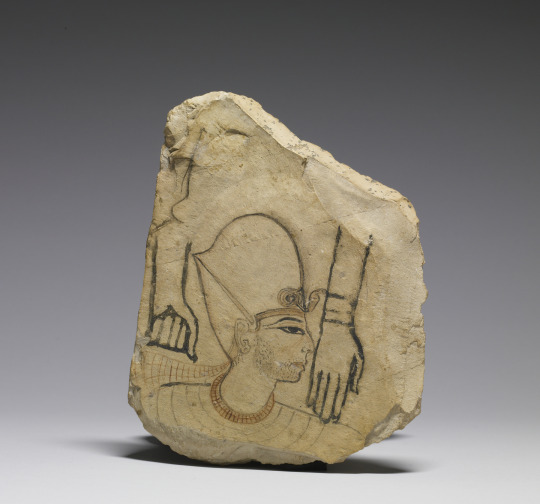
Ancient Egyptian ostracon depicting a pharaoh, the blue war crown (khepresh) atop his head and his face covered with stubble (a traditional sign of mourning). The image is thought to depict the 19th Dynasty pharaoh Seti I (r. ca. 1294-1279 BCE). Another, less experienced artist has also used the ostracon to practice drawing hands. Now in the Walters Art Museum, Baltimore.
#art#art history#ancient art#Egypt#Ancient Egypt#Egyptian art#Ancient Egyptian art#New Kingdom#19th Dynasty#Seti I#drawing#ostracon#portrait#Walters Art Museum
164 notes
·
View notes
Text
The deep past of ancient Egypt is carved in stone at Abydos, where the Mortuary Temple of Seti I houses the renowned list of 76 Egyptian kings, one of the most valuable pieces of evidence on Egypt’s history.
Despite the valuable information it includes, many kings of the time did not make the list. But why?
26 notes
·
View notes
Text








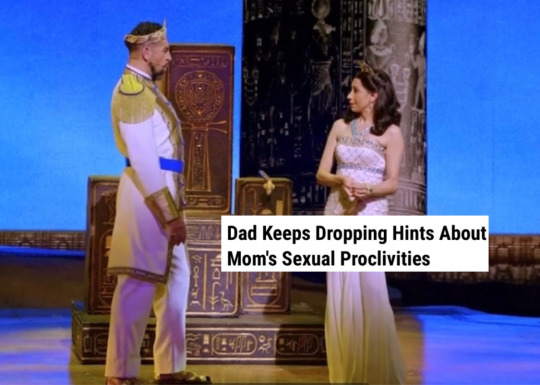

The Prince of Egypt the Musical (2023) as Onion Headlines (Part One)
#broadway#musical theater#stephen schwartz#Prince of Egypt#Prince of Egypt musical#Prince of Egypt proshoot#luke Brady#Liam tamne#west end#west end theatre#musical proshoot#headline meme#onion meme#theatre kid#Moses#tzipporah#Ramses ii#nefertari#tuya#seti I#jewblr
25 notes
·
View notes
Text
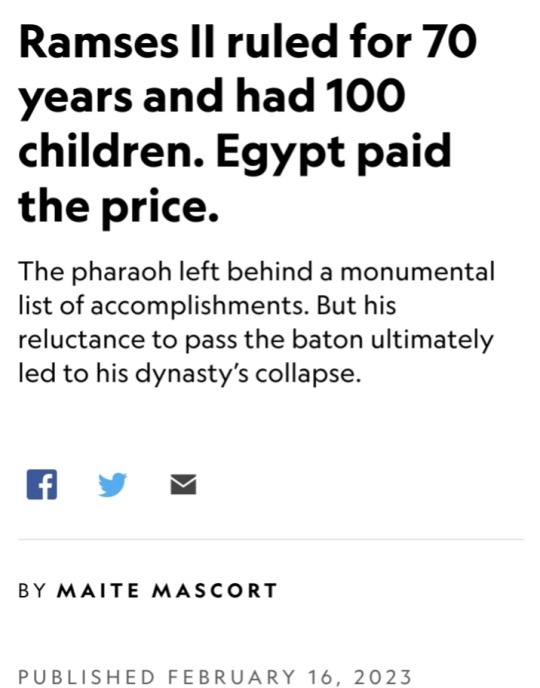

Few individuals in Egypt’s history have aroused as much curiosity, and as much skepticism, as Ramses II, third pharaoh of the 19th dynasty, whom history dubbed Ramses the Great.
Today, Ramses II is probably best known for leaving behind a monumental set of works — palaces, temples, statues, stelae — each one extolling his pharaonic achievements.
Every battle was a mighty triumph, every building spectacular, every statue and public work magnificent, every act a near superhuman achievement.
Ramses’ family came to power as outsiders.
They were northerners hailing from the Nile Delta and rose through military service, rather than southerners rising from elite circles in Thebes.
To rally support, Ramses II used these massive monuments to appeal to the people as part of a campaign to proclaim his greatness for all to see.
Ramses lived around 90 years and ruled for almost 70.
Thanks to his building campaigns, Egyptologists know much about his public accomplishments, but questions about his wives and children still remain.
Great royal wives
One of the most striking aspects of Ramses II’s story is the women who surrounded him:
Great royal wives and concubines, secondary wives and daughters, whom he sometimes “married,” for political show or perhaps for real.
He produced an extraordinary number of sons and daughters:
Some records say as many as a hundred. Because of his long reign, many of his children predeceased him.

Out of all of his wives, only two were known to have had prominent roles:
Nefertari and Isetnofret, the first two named great royal wives.
While the former figures prominently in Egyptian sources and countless representations of her exist, little is known of the latter, almost as if Ramses wanted her hidden.
It is only natural to wonder about the reasons for such unequal treatment.
When he became co-regent with his father, Seti I, Ramses II received a palace in Memphis, just south of the Nile Delta, and a large harem, including the first two great royal wives.
The origins of Nefertari and Isetnofret are unknown but that has not prevented the wildest of speculation about them.
Everything suggests that Nefertari was Ramses II’s favorite wife. Her beauty is attested to in the statues and paintings in her tomb in the Valley of the Queens.
However, it is uncertain what she actually looked like, since some images raise doubts about who is depicted.

For example, in Karnak, a small statue of Nefetari stands at the foot of a colossus representing Ramses II, her husband.
The colossus was later usurped by Pharaoh Pinedjem I, who had his name inscribed on it, and the features of both figures may have been modified.
Was only the name changed? Is that beautiful face still Nefertari’s? Egyptologists believe so.
Nefertari took part in official events alongside Ramses.
She was shown celebrating his coronation, in festivities of the god Min, and in Nebunenef’s enthronement as High Priest of Amun.
Her diplomacy culminated in a peace treaty between Ramses and the Hittites several years after the Battle of Kadesh (1274 B.C.) had resulted in a stalemate between the two powers.
Ramses II showed a clear predilection for Nefertari, devotion worthy of a great love story.
When he built the great temple of Abu Simbel, he made sure that Nefertari, then deceased, was on the facade, next to Tuya, his mother.

In this temple, Nefertari is transformed into Sopdet, the star Sirius, whose appearance presaged the Nile’s annual flooding.
Farther north, another smaller temple dug into rock is dedicated to Nefertari herself.
There, she is identified with the goddess Hathor. Carved into its facade is a tribute:
“Nefertari, she for whom the sun shines.”
Was Isetnofret the forgotten one? So it seems.
Until Nefertari died, around year 26 of Ramses II’s reign, Isetnofret’s likeness did not appear in the many temples the king built in Nubia, nor in those in Karnak and Luxor, where Nefertari is often portrayed.
Isetnofret was finally represented in some temples for her connection with her children.
Nefertari’s image may be seen in more places, but it was Isetnofret who bore her husband the two children closest to his heart.

Sons and daughters
Ramses II had a hundred or so sons and daughters with the wives in his harem.
Of his recognized children, some would play important roles, but only those born to Nefertari and Isetnofret appear on his monuments.
In the Nubian temple of Beit el Wali, a young Ramses, then co-regent with his father, Seti I, is shown suppressing a Nubian uprising.
The pharaoh’s royal chariot is flanked by two figures identified as Amenherkhepshef, his eldest child with Nefertari, and Khaemwaset, Isetnofret’s son.
Of all Ramses II’s sons, Khaemwaset is believed to have been his favorite.
Instead of taking up arms against his elder brother (also named Ramses), Khaemwaset became Grand Master of the Artisans of Ptah, a title in Memphite doctrine equivalent to High Priest of Amun in Thebes.
He also restored a number of pyramids in his father’s name. His work is still evident on the pyramid of Unas, from the 5th dynasty.
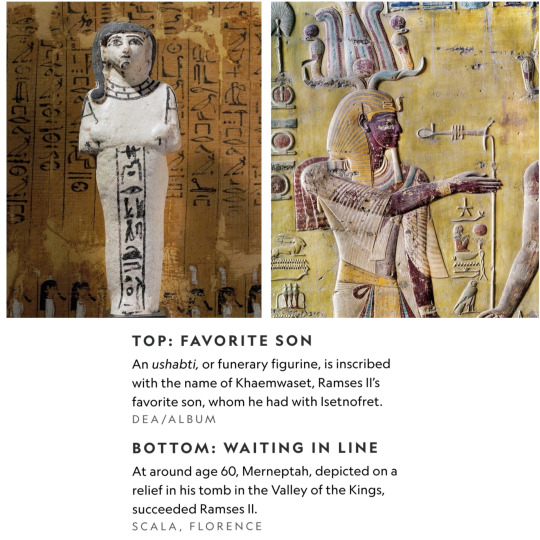
Khaemwaset also planned and directed the work of the “minor galleries,” the Serapeum at Saqqara, the collective tomb of the Apis, sacred oxen of Memphis.
Auguste Mariette’s 1850 excavation of the Serapeum revealed the mummy of a man named Khaemwaset, wearing a golden mask with several ushabtis.
It proved uncertain that it was the mummy of Ramses II’s son, and the location of Khaemwaset’s tomb remains unconfirmed. Much evidence suggests that it is in the necropolis of Saqqara.
The daughters of Ramses II’s great royal wives also held key positions in his court.
In fact, many became great royal wives themselves after marrying their own father.
It had become customary for 18th-dynasty pharaohs to marry their daughters.
While his great royal wife Tiye was alive, Amenhotep III married their daughter Sitamun.
Later, Akhenaten married at least two of the daughters he had with Queen Nefertiti.
No one knows if these marriages were consummated or purely ceremonial.

Ramses II appointed several daughters / great royal wives after the deaths of Nefertari and Isetnofret.
Bintanah (Isetnofret’s firstborn) was followed by Merytamon and Nebettawy (daughters of Nefertari) and Henutmire.
In addition to these daughters, other princesses outside the family also bore the title of Great Royal Wife, such as Maathorneferure, daughter of the Hittite king, and another Hittite princess whose name is unknown.
If Khaemwaset was Ramses II’s favorite son, everything points to Bintanath having been his preferred daughter.
She was given the titles of not only Great Royal Wife but also Lady of the Two Lands and Sovereign of Upper and Lower Egypt.
Bintanath occupies a privileged place on the facade of the temple of Abu Simbel. She and her sister Nebettawy appear on either side of the colossus.
Some historians believe Nebettawy’s mother was Isetnofret, but others consider her Nefertari’s daughter.
Fractured legacy
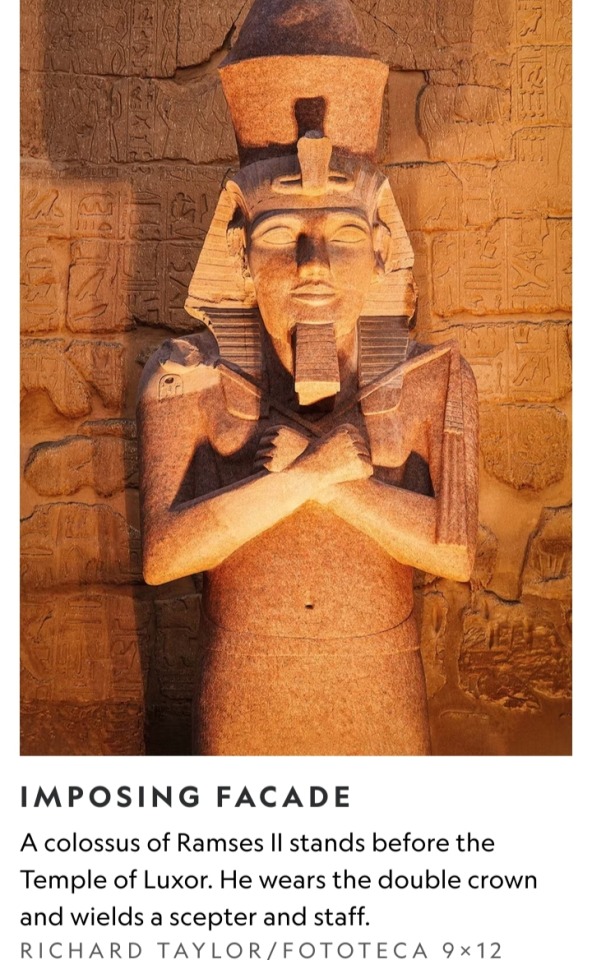
Ramses had no problems siring heirs with his many wives during his long life, but these sons would be forced to be patient; their father held tightly to his throne for almost 70 years.
Ramses had placed his children liberally throughout Egypt’s bureaucracies, corporations, priesthood, and military to foster loyalty he did not naturally inspire.
He was an outsider, a northerner hailing from the Nile Delta, disconnected from the wealthy elites in southern Thebes.
Ramses’ source of strength rested on ties to, not the moneyed or religious classes, but the military. Placing his sons in powerful positions across Egypt helped strengthen Ramses’ hold in these areas.
By the time Ramses II died in 1213 B.C., he was around 90 years old and had outlived many of these sons.
Amenherkhepshef, Ramses’ oldest son and crown prince, died when he was 25 years old.
Khaemwaset also did not outlive his great father and died in his mid-50s around 1215 B.C.
It would be a child of Isetnofret, her son Merneptah, who was 13th in line, who succeeded Ramses.
Merneptah was around 60 years old, well past middle age, when he became pharaoh and donned Egypt’s double crown.
After decades of waiting in the wings to take power, Merneptah might have expected a stable reign, like his father’s, but his hopes were in vain.
During his 10-year reign, his troops were able to defend Egypt successfully from a series of attacks from enemies in the east and west.
But the seeds sown by Ramses II would lead to chaos after Merneptah’s death.
Rivals for the throne, some of whom may have been sons of Ramses II, pushed Egypt into a period of decline and civil war.
By around 1189 B.C., the 19th dynasty would come to an end.

#Ramses II#Ramses the Great#Nefertari#Isetnofret#Seti I#Valley of the Queens#Pharaoh Pinedjem I#Hittites#Battle of Kadesh#Abu Simbel#Tuya#Amenherkhepshef#Khaemwaset#Auguste Mariette#Bintanath#Ancient Egypt#Egyptian Civilization#Egypt#egyptologist#Egyptology#Nineteenth Dynasty of Egypt#19th Dynasty of Egypt
18 notes
·
View notes
Text

You may be certain, dear Reader, that Emerson had not allowed us to neglect our professional activities. I have not reported on them in detail because they produced nothing of interest. While the rest of us toiled in the remote corners of the Valley, Ramses and David worked at the Seti I temple copying inscriptions.
Amelia Peabody in The Ape Who Guards the Balance by Elizabeth Peters
#amelia peabody#the ape who guards the balance#elizabeth peters#radcliffe emerson#ramses emerson#archaeology#ancient egypt#david todros#archaeological fever#seti i#abydos#valley of the kings
2 notes
·
View notes
Text
Prince Of Egypt Tracks/Songs
mis top tracks (soundtrack) de "Prince Of Egypt"
-Burning Bush
-Goodbye Brother
-Cry
-The Reprimand
-Rally
-Following Tzipporah
-Red Sea

top canciones
-The Plagues
-Deliver Us
-Playing With The Big Boys
-All I Ever Wanted / Queen's Reprise
-Through Heaven's Eyes
-If You Believe

#the prince of egypt#prince of egypt#moses#rameses#seti I#queen tuya#tzipporah#jethro#hans zimmer#ofra haza#soundtrack#ost#songs#musical#dreamworks#dreamworks animation#poe
13 notes
·
View notes
Text

chief royal scribe, yuny, with a shrine of osiris. reign of seti i, c. 1294–1279 b.c. ~ met museum, nyc. 33.2.1
3 notes
·
View notes
Text
The Snake, The Crocodile and The Dog
"Belzoni, the flamboyant Italian strongman who had been one of the first to work in the Valley of the Kings.."
Giovanni Bodtista Belzoni- Italian explorer and amateur archaeologist who excavated all over Egypt and worked closely with Henry Salt. Among his great feats and discoveries are:
The removal and transportation of the upper part of a colossal statue of Ramesses II from Thebes, now in the British Museum.
The discovery of the tomb of Seti I in the Valley of the Kings
The opening of Khafre's pyramid for the first time.



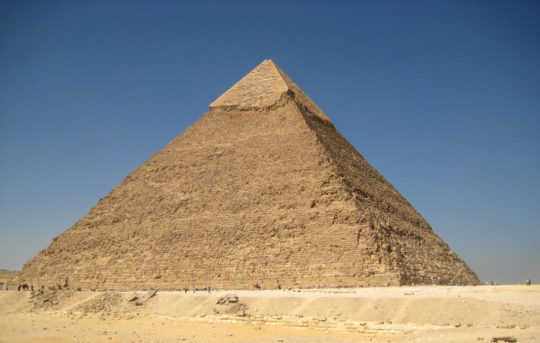
#reading amelia#ancient Egypt#archæology#egyptology#Seti I#ramesses ii#amelia peabody#historical fiction#Khafre#pyramids#ancient tombs#archaeological finds#Giovanni Belzoni#Egyptian explorers#Egyptian archaeologists#egyptian archaeology#books#currently reading
2 notes
·
View notes
Text

Goddess Isis wall painting in the tomb of Seti I.
249 notes
·
View notes
Text
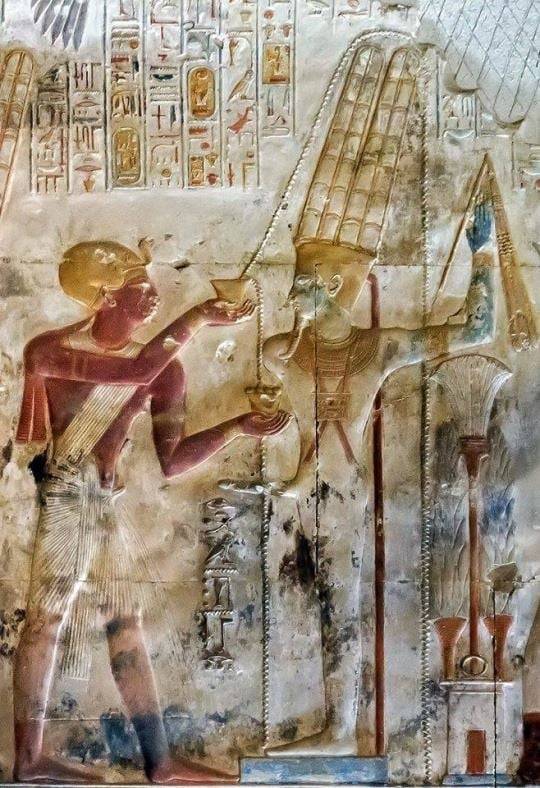
A detail of a relief depicts King Seti I offering a bowl with four pellets of incense to the god Amun-Re who posed as mummiform and ithyphallic, and sprinkling him with water.
Inner Shrine of Amun-Re, Temple of Seti I at Abydos.
55 notes
·
View notes
Text
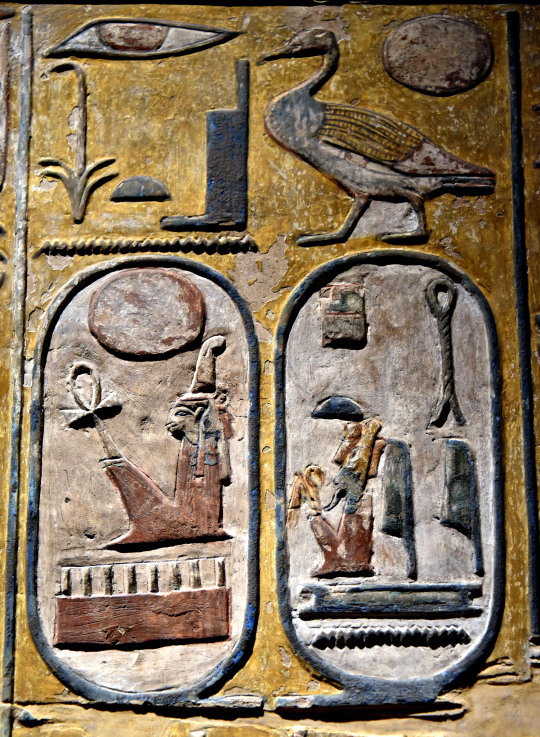
Birth and throne cartouches (painted plaster) of the 19th Dynasty pharaoh Menmaatre Seti I (r. 1290-1279 BCE), originally painted on a pillar of Seti's tomb in the Valley of the Kings (KV17). Now in the Neues Museum, Berlin. Photo credit: Osama Shukir Muhammed Amin FRCP/Wikimedia Commons.
#at#art history#ancient art#Egypt#Ancient Egypt#Egyptian art#Ancient Egyptian art#19th Dynasty#New Kingdom#Seti I#hieroglyphics#cartouche#Neues Museum
219 notes
·
View notes
Text
Strange hieroglyphs were discovered in the ancient city of Abydos. Appearing to depict modern or extraterrestrial vehicles, some claim that the Abydos carvings are evidence of ancient astronauts visiting Egypt over 3,000 years ago.
24 notes
·
View notes
Text


Seti I and God telling Moses the same thing is such a deep cut
#musical theater#west end#west end theatre#broadway#stephen schwartz#exodus#Prince of Egypt#prince of egypt west end#prince of egypt musical#seti I#Moses
13 notes
·
View notes
Text
The story of Dorothy Eady, also known as Omm Sety.

Have you ever heard of unbelievable stories in reincarnation? Sure, they are mostly unfounded factoids children start talking about. My youngest cousin, at one point, talked about her sister and mother who died in a fire, a long time about before she was born into this family. Things akin to this, vague statements, no identifiers, etc. Well, sometimes, kids will go deep into the idea. There is one child, whose age I do not know off the top of my head, that actually assisted police in an unsolved crime. In the child’s claim, he was the man who was murdered. He knew where the body was buried, called the murderer out by name (the guy actually turned himself in when the child confronted him, because he was so convincing), and led police to the body of the victim, in which on the way, he described how he was killed. Blunt force trauma to the head. In the same spot that the child had a pretty defined birthmark.
The thing that makes this such a fascinating story, is that I believe the child was born in America, and this murder took place on the British Isles. Scotland or Ireland, to be a little more precise, but I cannot recall off the top of my head which. He started bombarding his family with this information so much, that his father actually decided to look the guy up, whom the child was claiming to be, and found information about the guy; all aside from cause of death, or that he was definitively dead. To the authorities, he was still just missing.
Well, this story is actually about a Londoner, named Dorothy Eady, and to me, this story is one of the most fascinating when it comes to claims of reincarnation.
But, let’s keep the details a surprise for now. A little about Dorothy’s life needs to be described, first. She was born as an only child in 1904, in London, to Reuben Eady and Caroline Eady. For the first three years of her life, she seemed like a normal child. Never really mentioned anything about a past life or anything.
But then, she fell down a flight of stairs.
She was initially thought to be dead. A bright young lady, snuffed out in the earliest stages of her life. Tragic… Except, it wasn’t. She eventually recovered, but she was noticeably not the same person. She developed what is known as foreign accent syndrome, and began requesting to “be brought home”. Interestingly, her Sunday school teacher began requesting that her parents keep her away from her class, as she began speaking frequently about the ancient Egyptian religion. She was also expelled from a Dulwich girls school after refusing to sing a hymn that called on God to curse the Egyptians…
I’m sure you can start piecing together what is going on, now. A young girl suffered brain damage, causing her to develop incoherent memories, and changed her speech pattern enough to consider her an individual who had foreign accent syndrome. Just another story about kids incoherently spouting fake memories.
Yeah, except it isn’t. This may just be my third post, but if you have already read the other two, I’m sure you know by now that I wouldn’t be posting something so mundane. This is legitimately one of my favorite historical stories, actually.
Let’s continue, because this story gets kinda wild.
Dorothy really enjoyed Catholic mass, because it reminded her of the “Old Religion”, but her priest interrogated her and visited her parents house before expelling her and her family from their church. They believed she was just being a blasphemous, heathen child. But apart from randomly bringing up an ancient Egyptian religion, to this point, she hasn’t really talked about her alleged past life… That is, until her parents decided to take her to the British Museum.
A particular photograph seemed to jump out at her, in the Egyptian exhibit. It was a picture of the New Kingdom temple, to which she exclaimed “There is my home! But where are the trees? Where are the gardens?” This baffled her parents. The temple in the picture was the temple of Seti I, a pharaoh, and father of Rameses the Great. After this exclamation, she began running all about the Egyptian exhibits, kissing statues feet and frolicking “amongst her people.”
After she had learned about this exhibit, she took any chance she could to visit the museum. Eventually, this led her to meet on E. A. Wallis Budge, who quite enjoyed watching her youthful enthusiasm within the Egyptian exhibit, and pushed her to start studying hieroglyphics.
During World War I, Dorothy had to move to her grandmothers house in Sussex after a bombing raid threatened her life in London. Here, she continued studying ancient Egypt at the Eastbourne Public Library. At 15, she began describing being visited in the night by the mummy of Seti I. Now, some behind the scenes things that we haven’t spoken at all about include her having frequent nightmares and sleepwalking. This, coupled with the behavior of claiming to not be who she was led her to being sent to psychiatric institutions several times.
Despite this, however, she eventually left school by the age of 16, after which, she started traveling around Britain, as well as visiting archaeological sites around Britain. Eventually, she became a part time student at Plymouth Art School, where she began collecting any Egyptian antiquities that she could afford. Fortunately for her, a local theatre group enjoyed performing a play based on the story of the ancient Egyptian gods Isis and Osiris, in which she joined in. She would typically play the role of Isis, singing lamentations for Osiris’s death.
At the age of 27, she started working in London for an Egyptian public relations magazine. During this time, she met an Egyptian foreign exchange student named Emam Abdel Meguid, who would later become her husband. Before they married, however, he had to return to Egypt, but they stayed in touch, which likely led to the next chunk of her life.
In 1931, she moved to Egypt after Emam asked her to marry him. On landing, she kissed the ground and exclaimed that she had come home to stay. They lived in Cairo, and she received the nickname of Bulbul, which is apparently Arabic for Nightingale. The couple eventually bore a son, whom they named Sety, after the pharaoh I had mentioned before. This earned her the nickname of Omm Sety, or Mother of Sety.
Soon, she met the secretary of an American archeologist named George Andrew Reisner, who commented on her ability to charm snakes, and told her that spells like that appeared frequently in ancient Egyptian literature. She visited the Fifth Dynasty pyramid of Unas, where a man named Klaus Baer commented on her piety after she accompanied him on a visit to Sakkara, where she took an offering and removed her shoes prior to entering the pyramid. Things continued to happen behind the scenes, though. By this time, she was still commenting on apparitions visiting her in the night, or her experiencing out-of-body experiences, which were causing issues between her and the family she had married into.
Let’s delve a bit deeper into that. Bring it out from behind the scenes, if you will. During the earlier portion of her life, she had been talking about the appearance of the apparition of Hor-Ra. Allegedly, over the course of twelve months, he told her the story of her past life. The story took up around seventy pages of cursive hieroglyphic text, and described the life of a young Egyptian woman called Bentreshyt. Bentreshyt meant Harp of Joy, and is described in this text as being of humble origin. Her mother was a vegetable seller, and her father was a soldier during the reign of Seti I. By age three, Betreshyt's mother died, and she was left to the temple of Kom el-Sultan, because her father could not afford to take care of her by himself. Here, Bentreshyt was brought up as a priestess. At age 12, the High Priest asked if she wished to go out into the world, or if she would like to become a consecrated virgin, which according to the Catholic Church, is a woman who has been consecrated by the church to a life of perpetual virginity, as the bride of Christ. That being said, you could probably take the same definition, except replace Christ with either Osiris or Khenti-Amentiu. It is unclear to whom the temple Kom el-Sultan was dedicated to.
It is not known if the priestess understood what this meant, and didn’t have a practical alternative, so she took the vows and became a consecrated virgin. During the next two years of her life, she did learn what it meant to be a consecrated virgin through the drama of Osiris’s Passion and Resurrection. A role that only virgin priestesses consecrated to Isis (That answers which god she was consecrated to, I suppose) could perform. One day, the Pharaoh, Seti I, visited the temple and spoke to Betreshyt, after which they became lovers. Interestingly, this is considered “Eating the forbidden fruit,” probably due to the fact that Betreshyt pledged her chastity to Isis. Eating the forbidden fruit, in Egypt, was described as eating the uncooked goose, which I think is a funny saying. The high priest discovered this affair, and explained to her that she would most likely be sentenced to death in a trial for breaking her vows to a god. She took her own life rather than allowing Seti’s name to be dragged through the mud like that.
In 1935, Dorothy and her husband separated when he took a teaching job in Iraq, and their son stayed with her. Two years later, the marriage crumbled, and she moved to Nazlat al-Samman to live near the pyramids of Giza, where she met the archeologist Selim Hassan at the Department of Antiquities. He took her as his secretary, making her the departments first female employee. She was reported to be “a great help to Egyptian scholars,” especially to Selim Hassan and another archeologist named Ahmed Fakhry. By this point, she was a poorly educated Englishwoman, who had developed into a first-rate draughtswoman (a woman who makes detailed technical plans or drawings) and writer, having produced articles, essays, monographs, and books of apparently a large range.
During this time, she would pray, make offerings, and frequently spend the night in the Great Pyramids. Soon, local villagers would start gossiping about her, as she would make night-time prayers to ancient Egyptian gods at the Great Sphinx. This does not mean they didn’t respect her, however. In fact, they did. She was honest in her faith in the ancient Egyptian gods, and they found this rather admirable, especially considering the way this area treated non-Islamic individuals. Perhaps, due to the fact that she was observing ancient Egyptian religious beliefs, they chose to leave her be. Another reason may be that she was sensitive to religious observances of others, fasting with the Muslim villagers during Ramadan, and celebrating with Christians during Christmas time. Fortunately, non-monotheistic religions allow for this, as they believe in numerous gods. Perhaps their gods did exist in her mind, and she wanted to do what she could to aid in appeasing them.
Ahmed Fakhry’s research project was terminated in early 1956, leaving Dorothy unemployed momentarily. He suggested that she climb to the top of the great pyramid, turn west when she reached the top, and address herself to Osiris, and ask him “Quo vadis?”, which is a latin phrase meaning “Where are you marching” or “where are you going?” She was offered a choice to either take a job in Cairo, in their records office, at a high pay rate, or at a lower payrate, going to Abydos as a draughtswoman. She chose the latter, reporting that Seti I approved of the move.
In 1956, the now 52 year old Omm Sety (Dorothy) moved to Arabet Abydos, which sat in the cradle of the Pega-the-Gap mountain, of which the ancient Egyptians believed to lead to Amenti and the afterlife. It is here that she coined the nickname of Omm Sety, because the local people held a tradition in which they referred to a mother by the name of their eldest child.
Abydos held special significance for Dorothy, because it is where she believed Bentreshyt had lived and served in the Temple of Seti. Prior to her moving here, she had made fairly frequent pilgrimages to the site, during which she had demonstrated advanced knowledge. At one of these trips, the chief inspector from the Antiquities Department, who knew of her claims to be the reincarnation of an ancient Egyptian priestess, decided to test her claims.
He had asked her to stand at a particular wall of paintings in complete darkness. He had asked her to identify the paintings, based on her past life knowledge as a temple priestess. She successfully completed this task, which astonished the chief inspector, because by this time, this knowledge had not been published. She had no way of researching what these paintings had meant, and most of the world didn’t even know this temple existed at this time.
Now, sure. I will admit that it is possible that she had read up on the findings in this temple. She did work for the Department of Antiquities, after all, as a seemingly upper member, and directly under another archeologist. But it is equally as possible that she had not, and I tend to believe the latter, simply due to the fact that the chief inspector didn’t believe she had this knowledge, unless she was being truthful about a past life.
She spent the first two years of this period listing and translating pieces from recent excavations of the temple palace. Edourard Ghazouli incorporated her work in his monograph, “The Palace and Magazines Attached to the Temple of Sety I at Abydos”, in which he expresses thanks to her and admits how impressed he was at her ability to translate enigmatic hieroglyphs. In 1957, she was able to write out a liturgical calendar on the feast days of ancient Egypt.
To her, the temple was a place of peace and security, where she was watched over by the ancient Egyptian gods. She claimed that in her past life as Bentreshyt, the temple had a garden, where she first met Seti I. No one believed her while she was a child, but as she grew older, more and more people started believing her, simply due to her extensive knowledge of ancient Egypt, which seemed to surpass most of what was available in literature.
Oh, the other thing that caused people to believe in her was this. Remember the garden I just mentioned in the last paragraph? Yeah, no one knew that there was a garden at the Temple of Seti… until she pointed out where it should be located, and they decided to investigate it. While they didn’t find a thriving garden (because of course they didn’t… it was buried under sand. Plants don’t survive with no sunlight, and they rarely leave fossils), they did find evidence of a lush garden. But that’s not even the entire part of this story. She described this garden before the excavation began, and the findings matched her description to the T. Of course, it wasn’t exact. In her mind, it was still an active garden, thriving with vegetation, and what they found was the ruins of a garden that had evidence of lush vegetation activities, but the overall layout of the garden matched the description she gave.
She spent the rest of her life, visiting the Temple of Seti every morning and night to recite prayers, and would frequently bring offerings of beer, wine, bread, and tea biscuits, and would also recite the Lament of Isis and Osiris, which she remembered from her time in a London theatre group. She turned one of the temple rooms into a personal office, where she carried out most of the rest of her work, and befriended a cobra, who she regularly fed, which shocked the temple guards.
This was a particularly long story, and I apologize. I knew of this story, but had to do a bit of research to provide enough context, as well as present the information as accurately as I could. I didn’t recall the mentioning of cursive hieroglyphs the last time I had heard this, but after reading that, I decided to google it… So, here is what they look like.

Perhaps the next post will be about the child who claims to be the reincarnation of the reincarnation of a martian child, who assisted in building the Great Sphinx, which is also a pretty interesting story. Spoiler alert, his story prompted scientists to perform what essentially turned out to be a massive ultrasound on the Great Sphinx, leading to an interesting discovery.
Also, if you are actually taking the time to read these posts, and know of something in relation to what I have been talking about, please let me know! I absolutely love weird historical stories. I have a few more left in mind, and am hoping that I can remember more, or come across more, so anyone's help would be deeply appreciated!
#history#egypt#ancient egypt#hieroglyphs#archeology#pyramids#great pyramids#egyptian gods#pharaoh#Seti I#reincarnation#leaders
4 notes
·
View notes